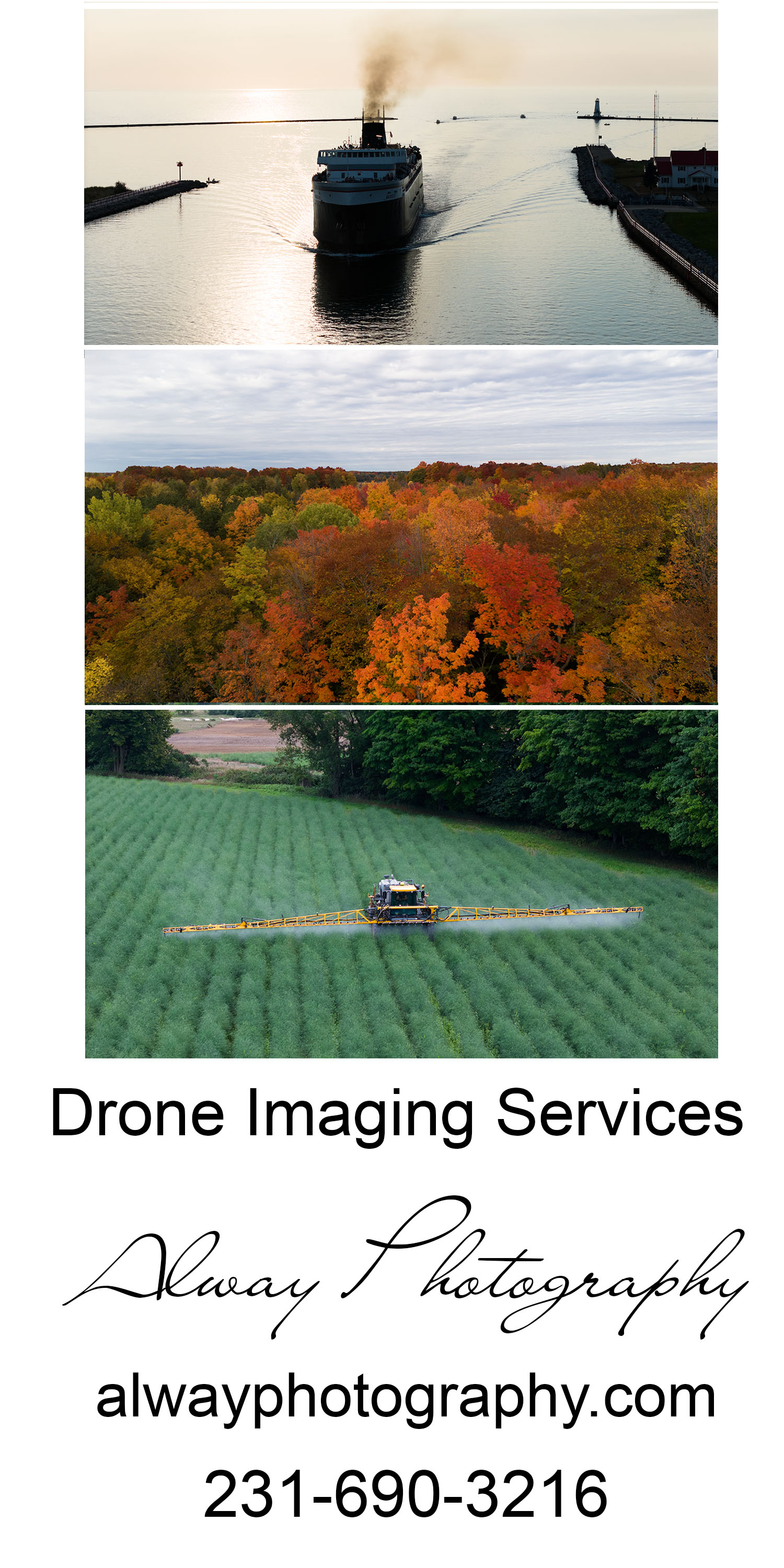By Jeffrey Miller.
Much publicity has been given to Manierre Dawson, the world-renowned abstract artist who made his home in Riverton Township. But, Riverton is actually home to another well-known artist, Steve Harley. Scottville native and historian Jeffrey Miller tells Harley’s tale.
Taking the self-guided tour at Historic White Pine Village gives you an understanding of the pioneers who pushed forth on to the Frontier Line and struggled for rugged independence. The buildings are authentic and represent their homes, their schools and their legal system. You can see how they worked and worshiped; how they lived day-to-day.
Exploring living history gives a great impression of what early life would have been like, which instills the cultural importance of early people. In the United States nowhere is this more abundant than in the commonwealth of Virginia. Jamestown (being the earliest settlement) and Colonial Williamsburg have some of the most abundant and enlightening exhibitions of early American life.
It is advisable to spend several days at Colonial Williamsburg in order to get the full experience. There are many buildings and artifacts, but there are also many museums. Folk art is a great record of history from which we can understand more about how things once were, and what earlier people felt was most important. One of these museums is The Abby Aldrich Rockefeller Folk Art Museum. There is an exhibit there with roots in Mason County, and September 3 will be the last day of the Steve Harley exhibit.
Born in Fremont, Ohio on Dec. 19, 1863 Steven William Harley was destine to be a farmer, whether he liked it or not. As a child his family moved to Riverton Township in Mason County buying a farm that functioned mainly as a dairy and fruit tree farm. Steve spent the first 30 years of his life in Riverton, exploring the old growth forests, streams, and hunting and fishing. Nearing the end of the 19th Century the lush forested terrain of his youth had become depleted by the juggernaut lumber industry. He was cynical of mans encroachment on nature, in particular Epworth Heights.
He began preserving the wildlife by way of taxidermy. His house was full of foxes, wolves, ducks, beavers, a small bear, a gold owl, a squirrel on a branch and at least three complete deer (one which resided in the living room). He even had some of his stuffed works in his front yard, at least for a photograph. One room of his Riverton farm was dedicated to tanned hides and pelts.
He needed more ways to capture the beauty of the animals whose habitats were disappearing. This led him to purchase oil paints and take lessons through a correspondence course; the only education he received past the fourth grade.

South End of Hood River Valley by Stephen W. Harley, Oregon, 1927, oil on canvas.
The Colonial Williamsburg Foundation. Museum Purchase.
Around 1900 he inherited the family farm. He soon hired caretakers John and Margaret Kosten to manage the dairy cows and prune the fruit trees. And then nothing happened. That is to say, this went on for over 20 years and Steve Harley grew restless and wanted a change.
Some research suggests that Harley was married, however census data from 1900-1920, and 1940 show him as single, and the Mason County Courthouse found no record of a Steve Harley being married. Earlier articles suggest that Harley left his ‘wife’ and ran off with the caretaker’s wife, Margaret Kosten who was 22 years his junior.
What we are sure of is that Steve Harley left Michigan in c1923 and with him went Margaret Kosten. She was willing to leave her husband (they later divorced) to go exploring the Wild West, but she didn’t remain in the harsh atmosphere of the untamed West with Harley; after about three months she returned to Michigan, settling in Grand Rapids. The census of 1930 shows a Steve Harley married to a Margarett (sic) in Grand Rapids, Michigan, but these dates don’t line up with their trip out west, unless they moved and married in Grand Rapids before they left.
Harley’s siblings had moved out to the burgeoning West Coast many years prior to his visit. Perhaps their descriptions of the abundant flora and fauna drew him westward. However, instead of utilizing his talents Harley spent most of his time exploring, fishing, and drinking.

Upper Reach of the Wind River by Stephen W. Harley, near Carson, Washington, 1927,oil on canvas. The Colonial Williamsburg Foundation. Museum Purchase.
Twice Steve Harley mortgaged the farm he had inherited, and in 1925, while in Harbor City, Cali., the bank director wrote him a letter about the “same old subject… foreclosing our mortgage… this deal cannot go on forever…” Harley’s response was to head to Alaska where he hunted and trapped; he was the image of rugged individualism. The following year the bank procured his family farm. One year and five days later the farm burned to the ground. At about the same time Harley left Alaska for the Northwest and began taking pictures of the abundant nature with a Kodak camera. He felt that the camera failed to truly capture the bountiful beauty so he bought canvasses and paint.
He was a meticulous painter using a magnifying glass to capture the fine detail of his subjects. He started painted the Mount Hood and Mirror Lake out west, but finished the painting in Grand Rapids; presumably working from sketches, photos, and memory. Other works include: South End of Hood River Valley, The Harley [Family] Farm, Upper Reach of the Wind River, and Wallowa Lake (on back of which he wrote by S.W. Harley [The Invincible]). He was at the paramount of his expertise while in his sixties. Soon his hands and joints caught up with him and he was no longer able to continue his craft.
With his wild adventures behind him, his ability to paint wore thin in the winter of his life. In poor health, penniless, and alone he moved back to Mason County, settling in Scottville on North Columbia Street. The Bureau of Old Age Assistance gave him $20 a month, later it was reduced to $18. In order to sustain himself he would sell his paintings or trade them for alcohol.
Steven Harley died November 23, 1947 in a convalescents home on 313 N. Robert Street in Ludington. Two people sent flowers, but no one attended his funeral and he was buried in an unmarked grave.

Wallowa Lake by Stephen W. Harley, Oregon, 1927-1928, oil on canvas. The Colonial Williamsburg Foundation. Museum Purchase.
In June 1950 Flair Magazine introduced him to the art world in an article about Harley and his “three remaining paintings.” The article was written in a personal conversational style that implies a connection between the author and the artist. The Abby Aldrich Rockefeller Folk Art Museum acquired these three paintings in 1957 from the New York gallery M. Knoedler and Company. Two more were discovered and procured in 2002. His were the first 20th century paintings to be acquired, which opened the contemporary floodgates of folk art. An impressive exhibit of his five known paintings, his sketchbook, pictures and a biography are on display at the museum.
There is now a marker stating his name, dates, and the title “Artist” at Central Riverton Cemetery on Hawley Road. The marker is in the family plot, which is across the road from an orchard. Towering behind the orchard are recently constructed windmills that cast a shadow on Steve Harley’s grave.























































.png)


